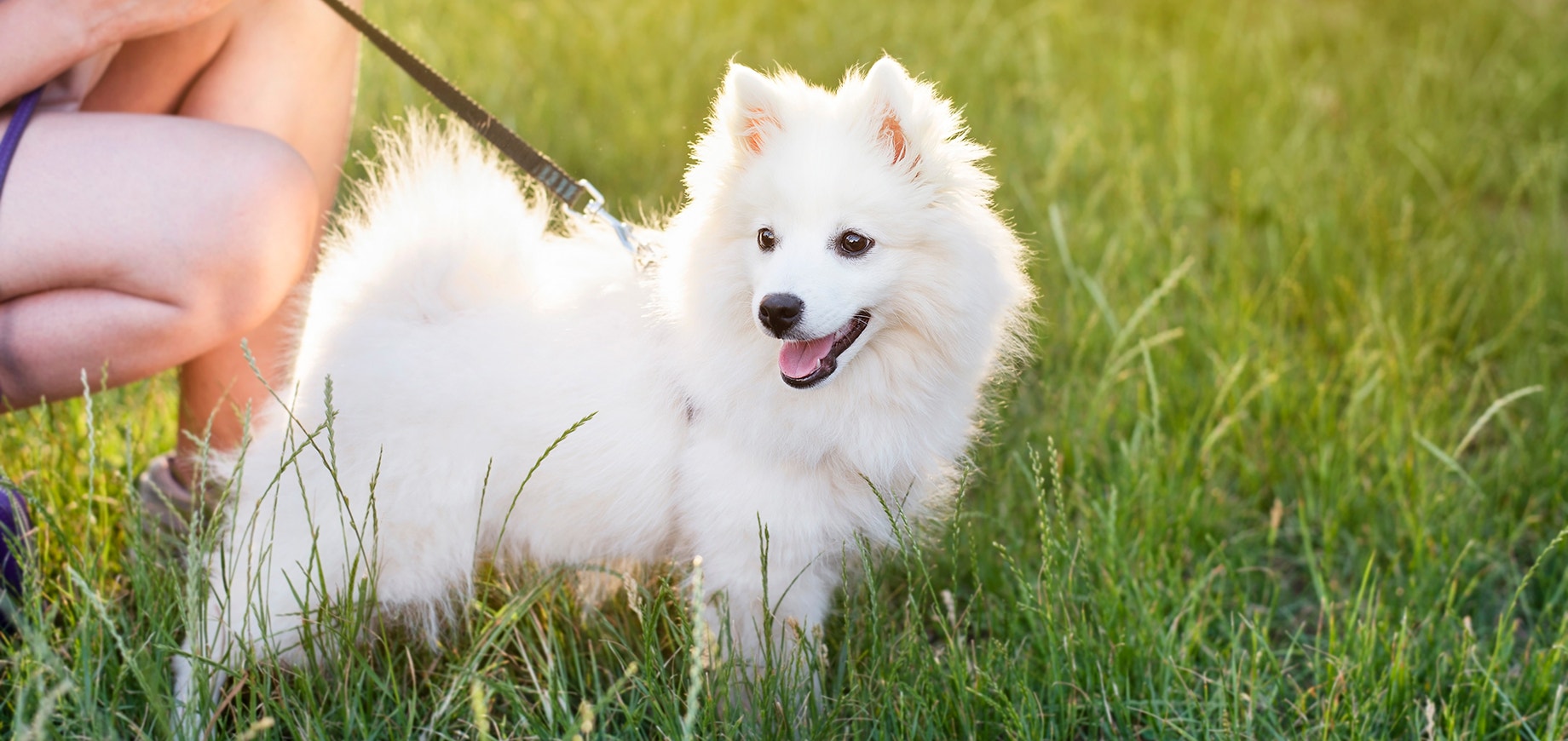

Taking your puppy for regular walks is an important part of raising a happy, healthy dog. When you bring a new puppy home, feeling excited to get your pup out and about is normal. However, there are some important things that a new dog parent should know before you take your puppy on a walk. In the next five minutes of this article, we'll go over a few things. We'll look at the key factors that affect how long to walk a puppy. We'll also share some dangers of overwalking your pup and ways you can exercise your dog to build his stamina. Sounds good? Let's dive right in!
Vets typically recommend waiting until a puppy has had all their vaccinations before taking them out for walks. This allows their immune system to develop enough defences against common diseases. The vaccination schedule is usually complete by 8–12 weeks of age.
During the waiting period, you can still carry or drive your pup to places where they can be exposed to new sights, and sounds. But resist the temptation to let small paws touch the ground in public areas. An outdoor sling or puppy carrier is useful for this.
Once your vet gives the all-clear after their last round of vaccinations, you and your puppy can happily hit the streets or trails together. Just take it slowly, especially when your dog refuses to walk.
Most puppies have bursts of energy followed by lots of napping. At this young age, they'll need about two short walks per day — usually first thing in the morning and again in the evening. Certain breeds are more active and may need additional exercise sessions. You'll soon get a feel for your individual puppy's energy rhythms. A couple of shorter walks is better than one long slog.
Interactive games are also great for burning off puppy exuberance between walks. And of course, the regular trips out to the garden for toileting are also occasions providing physical exercise.
Hitting the pavement with your pup for the first time is exciting. But be sure to start nice and slowly, for both your sakes. Begin with just a few minutes of walking to assess your puppy's energy levels. If they seem distracted, tired or reluctant to walk after 10-15 minutes, call it a day. Let them guide the pace rather than overdoing it. Resting in a shady spot mid-walk lets you both recoup. Bringing water is wise, too. As your puppy gets older and more conditioned to the exercise, you can gradually increase walking times and distances. Just like humans, though, they need recovery time between workouts. Don't overdo walks on back-to-back days.
How much exercise do puppies need exactly? While all puppies need exercise tailored to their age, their breed also determines appropriate activity levels. Pay close attention to your puppy's breathing and signs of overexertion. Brachycephalic breeds like Bulldogs, Boxers and Pugs are prone to breathing issues, meaning multiple shorter walks suit them better than one long hike. If your pup seems distressed, get them checked by a vet immediately.
Puppies tend to be most energetic first thing in the morning and early evening. You can play with your puppy or have walks around these prime times. Avoid walking right before or after mealtimes, though, as exercising on a full stomach can be dangerous. Establishing a consistent schedule will help your puppy predict walk times. If bad weather spoils your plans, a shorter pavement stroll might have to substitute for that big outing in the park.
A good rule of thumb is around 5 minutes of lead-walk time per month for your puppy's age. For example, a four month old pup could walk for 20 minutes maximum. This pace allows for plenty of interesting sniffing and exploring, which is key for puppies. The appropriate duration obviously depends on breed size, though. Smaller pups usually get tired faster. Bulldog breeds struggle more with distance. Watch your puppy for signs of fatigue like lagging behind, lying down or heavy panting. As your puppy grows, the length and speed of walks can gradually increase with their energy levels and conditioning. Most adult dogs need 30–60 minutes of exercise per day.
Aside from the question of how long to walk your puppy, you might also be wondering if there are any dangers to over-exercising your puppy. Just like human children, puppy joints and growth plates are extremely vulnerable to overuse injuries that can plague them for life.
Signs of excessive exercise include obvious limping or stiffness, whining during walks, reluctance to move or extreme lethargy. You need to visit the vet if you notice any of these. Prevention is the best remedy here, though. Love your puppy enough to sometimes say no to those pleading eyes, and give your puppy enough sleep. Interactions in the home or garden are mentally stimulating too, so add in regular training sessions, play time or grooming.
Walking in temperature extremes requires some extra caution. Short-muzzled breeds like Pugs can overheat easily in summer's heat and humidity. Their inability to pant effectively means heat stroke can set in rapidly. Monitoring them closely and always having water on walks is essential.
Cold winters can be miserable for petite puppies and sight hounds and breeds with thin coats akin to a Whippet or Greyhound. Equip them with a cosy dog jacket and booties. If it's dangerously icy underfoot, skip walks that day. Salt used to de-ice pavements can be highly damaging to the pads of dogs paws. It is often better to not go for a walk on days of extreme weather.
Letting a professional vet assess your puppy's growth and health should guide any exercise plan. When your pup is ready for walks, begin gently and build up duration in line with their age, energy and breed traits.
Consistency can help your puppy adapt to new routines. And be alert to signs of joint pain, breathing issues or temperature sensitivity requiring veterinary attention. With the few things we’ve shared here, we’re sure we’ve been able to answer the question of how long to walk a puppy.
Still have a question or two about how long to walk a puppy? We’re provided answers to some of the questions pet parents usually ask.
A 12 week old puppy can walk up to 15 minutes per day. Puppies of this age should be regularly assessed for fatigue or discomfort during walks, though. Their tiny bodies are growing rapidly at this age, and overexertion can harm their development.
Most puppies younger than six months of age should not be walked for a full 30 minutes, regardless of their energy levels. Owners can consult general puppy walking guidelines but also observe individuals for signs of tiredness necessitating walk breaks. Adult dogs can build progressively to 30-60 minute walks.
A week old puppy should not go on intentional walks at all. At this extremely tender young age, puppies have minimal muscle and joint development and require very gentle absolute minimum handling. This is because the mum will (generally) be providing everything they need in this neonatal phase.

